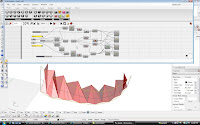Marcus Prize Studio 2010
10 Proposals for the City.
Alejandro Aravena
Ryan O’Connor
"The greatest difficulty of this vertiginous and massive urban growth in world globalization is that the socially conflicted city and the wealth-generating city are joined in an unprecedented way. Never before has the relationship between the city as a problem and the city as an opportunity, between the city as a time bomb and the city as a goldmine had such clear ties to cause and effect.” –Alejandro Aravena
Scope: Attractive Milwaukee, Inclusive Milwaukee
The context of this studio, is that we should operate from both ends. To make a city competitive, identify and implement proposals for the elite and for the disadvantaged.
On the other end, cities are a shortcut towards equality, since they can improve the quality of life of the poor, without having to wait for income redistribution. So we need to identify strategic projects that can reshape declining communities and neighborhoods and integrate them with the network of opportunities that cities concentrate, using housing, public space, transportation and urban infrastructure as tools.
Students will each identify a problem or opportunity in the city, which belongs to the broader discussion (newspapers, city council, academia) at very different scales and create an architectural or urban proposal that then can be collected into a set of propositions for the city.
Why take the Marcus Prize Studio?
- Internationally known studio
- Work with an internationally respected architect (Icon Magazine online: top 20 architects under 40)
- Professional publication opportunity (e.g. Skycar City, available at Amazon.com)
- Exhibition potential (e.g. Marcus Prize 1: Skycar City, exhibited at Venice Bienalle, Marcus Prize 2: Designers as Builders, exhibited at Deutsches Architekturmuseum in Berlin)






































 pull chords about the same length
pull chords about the same length
















